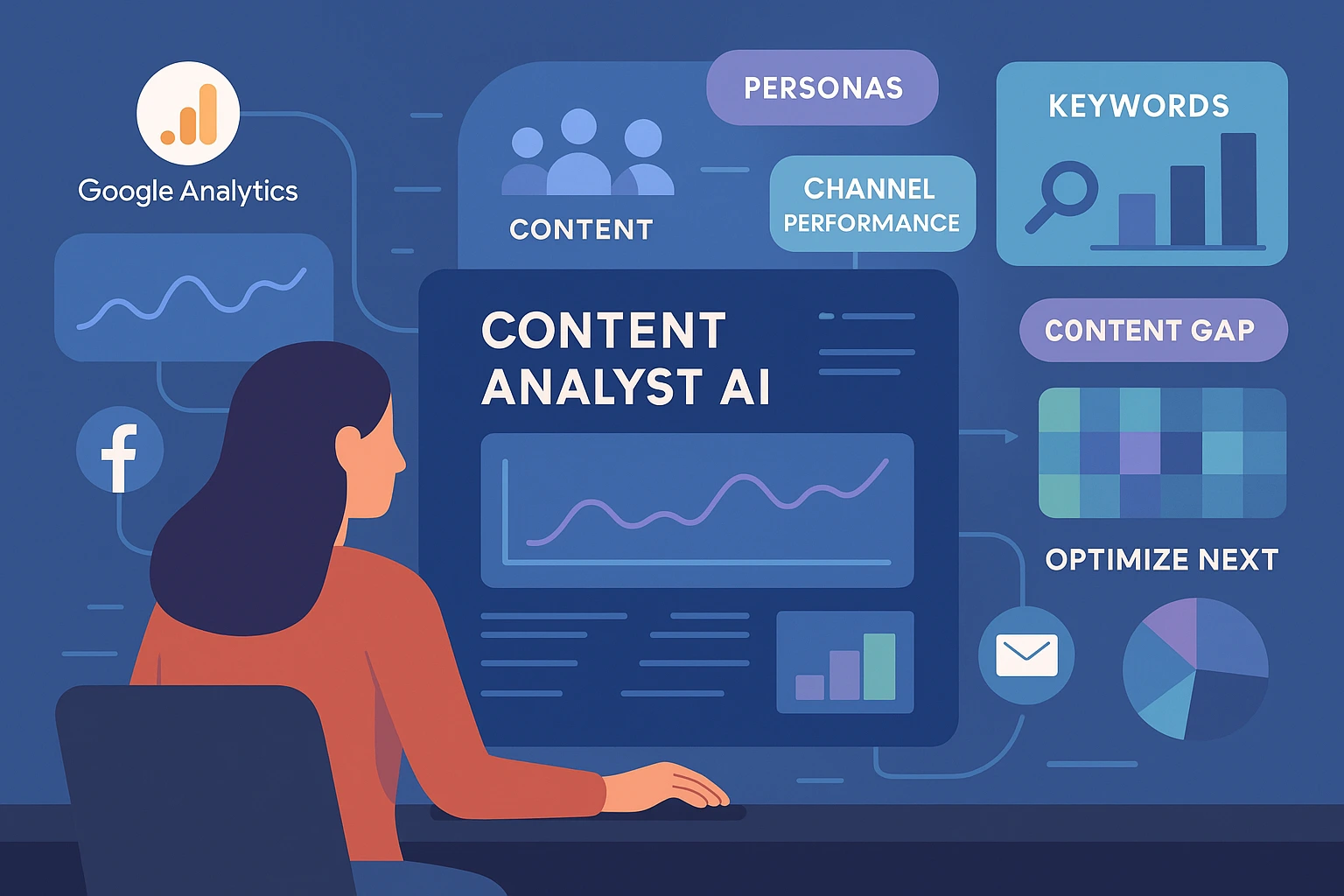
Leveraging AI as a Content Analyst: Strategic Steps for Planning Your Next Moves
Leveraging AI as a Content Analyst: Strategic Steps for Planning Your Next Moves
In the rapidly evolving landscape of digital marketing, understanding and optimizing content performance is paramount. Traditional analytical methods, while valuable, can often be time-consuming and require specialized expertise. Enter artificial intelligence (AI)—a transformative tool that empowers marketers, content strategists, and business owners to analyze, interpret, and act on content data more efficiently and accurately. This article explores how you can harness AI as a powerful content analyst to inform your next steps in content planning and strategy.
The Power of AI in Content Analysis
AI's primary advantage lies in its ability to process vast amounts of data swiftly, uncovering patterns and insights that might be hidden to the human eye. Whether analyzing social media metrics, website analytics, or email campaign results, AI can synthesize information from multiple sources to provide a comprehensive view of content performance. For instance, AI tools can evaluate engagement rates, conversion metrics, and audience behavior, offering actionable insights without the need for complex manual analysis.
Furthermore, AI platforms often allow users to engage in natural language conversations—simply uploading data and asking questions in plain language. This democratizes data analysis, making it accessible to non-technical team members like content creators and marketing strategists who may find traditional analytics dashboards intimidating. As Andy Crestodina, a respected marketing expert, notes, this ease of use enables marketers to validate hypotheses and make data-driven decisions more confidently. Platforms designed with this accessibility in mind, like PostFuel's Business Hub, integrate these analytical capabilities directly into the content strategy workflow.
Step 1: Establishing Clear Content Goals and Personas
Before diving into AI analysis, it’s essential to define your target audience and content objectives. Creating detailed customer personas ensures that AI-generated insights are relevant and aligned with your strategic goals. For example, understanding the interests, challenges, and behaviors of your audience allows AI tools to evaluate content effectiveness more precisely.
Generating accurate personas can be streamlined using AI-powered tools that synthesize demographic, behavioral, and psychographic data. These personas serve as the foundation for subsequent content analysis, ensuring that your evaluation focuses on THE right audience segments and content types.
Step 2: Analyzing Content Performance Across Channels
Once your personas are set, the next step involves analyzing your existing content. Upload data from platforms like Google Analytics (GA4), social media insights, or email metrics. For example, a comprehensive export of your top-performing articles or posts can be examined to identify which topics resonate most with your audience.
AI can assist by detecting underperforming content or content clusters that need improvement. It can also reveal which channels—search engines, social media, or email—drive the most engagement for specific topics. These insights enable you to allocate resources more effectively, focusing on high-impact areas or exploring new content opportunities.
Step 3: Conducting Semantic and Gap Analyses
Beyond surface-level metrics, AI tools excel at semantic analysis—evaluating the core themes, keywords, and concepts within your content. Conducting a semantic distance analysis helps identify gaps in your content portfolio. For instance, if your existing articles on “AI content automation” perform well but lack coverage on related topics like “content personalization,” AI can suggest strategic content gaps.
This approach ensures your content strategy is comprehensive, addressing audience needs and search intent holistically. By pinpointing under-explored topics with high potential, you can develop a content calendar that fills critical gaps and builds authority within your niche.
Step 4: Visualizing Content Performance for Better Decision-Making
AI-powered visualization tools can transform complex data into intuitive heat maps, charts, and dashboards. For example, creating a heat map that color-codes topics based on engagement and conversion metrics allows you to quickly spot high-performing themes and underperforming areas. This visual approach simplifies decision-making, helping prioritize content updates or new topic development.
Moreover, these visualizations can highlight patterns over time, revealing seasonal trends or shifts in audience preferences. Such insights inform your editorial calendar and content distribution strategies, ensuring your efforts align with audience interests and maximize ROI.
Best Practices for Integrating AI in Content Strategy
- Privacy and Data Security: Always ensure data privacy, especially when analyzing sensitive or client-specific information. Obtain necessary permissions and use secure platforms.
- Iterative Analysis: Use AI insights as a starting point rather than definitive answers. Validate findings through manual review and continuous testing.
- Channel Alignment: Recognize that content may perform differently across channels. Tailor your strategies accordingly to optimize for search, social media, or email.
- Focus on Quality and Relevance: While AI provides data-driven insights, human judgment remains crucial. Prioritize creating valuable, audience-centric content based on AI recommendations.
Conclusion
Incorporating AI as a content analyst revolutionizes the way businesses plan, execute, and optimize their content strategies. From generating detailed personas and analyzing performance metrics to identifying content gaps and visualizing results, AI tools empower marketers to make smarter, faster decisions. As the digital landscape continues to evolve, leveraging AI-driven insights will become an indispensable part of a successful content marketing strategy—helping you stay ahead of the competition and deliver content that truly resonates with your audience.
Ready to put AI to work on your content strategy?
PostFuel's integrated platform simplifies the process outlined above. Use the Business Hub to analyze your business and generate strategic ideas, then create high-quality content with our intuitive interface or powerful API.